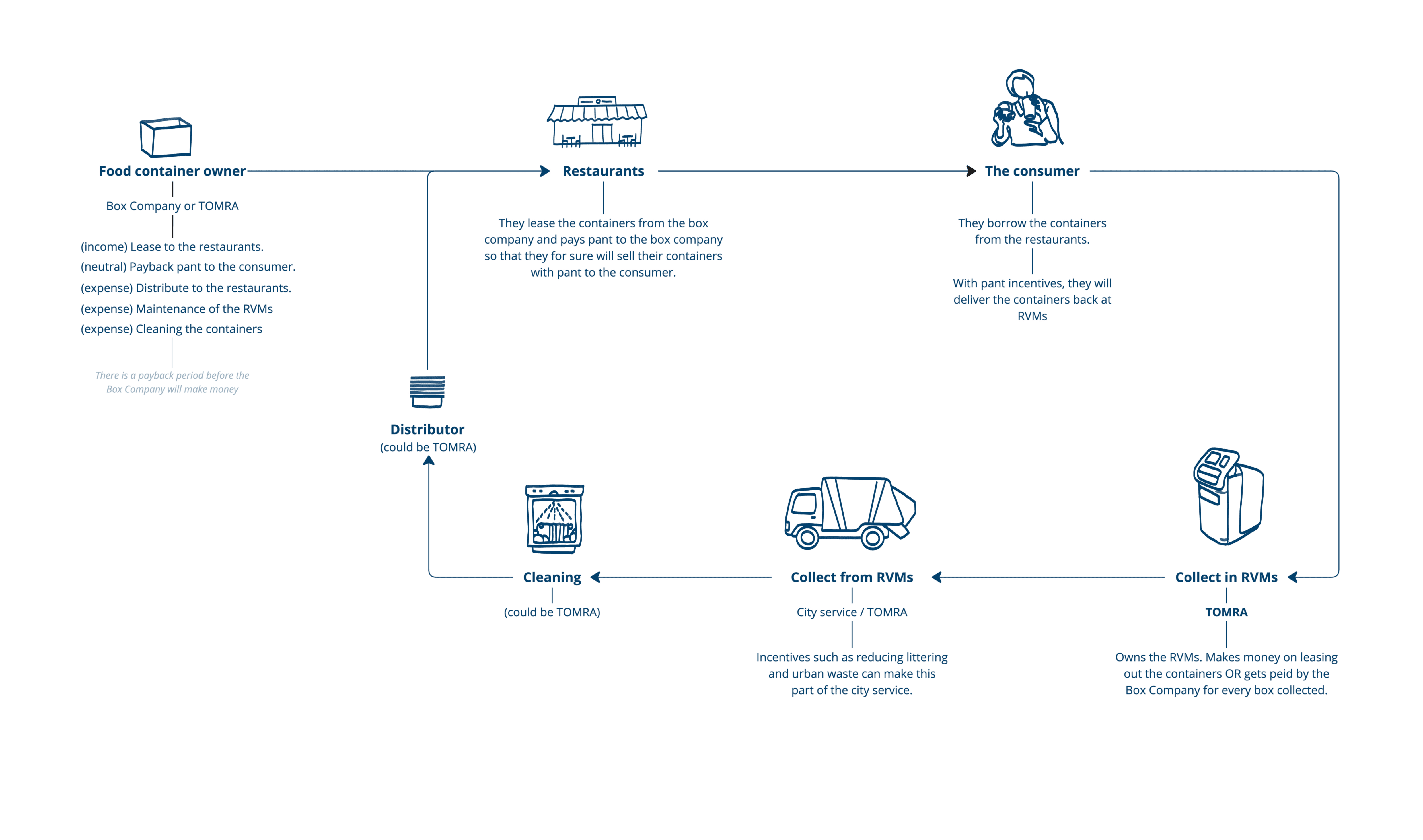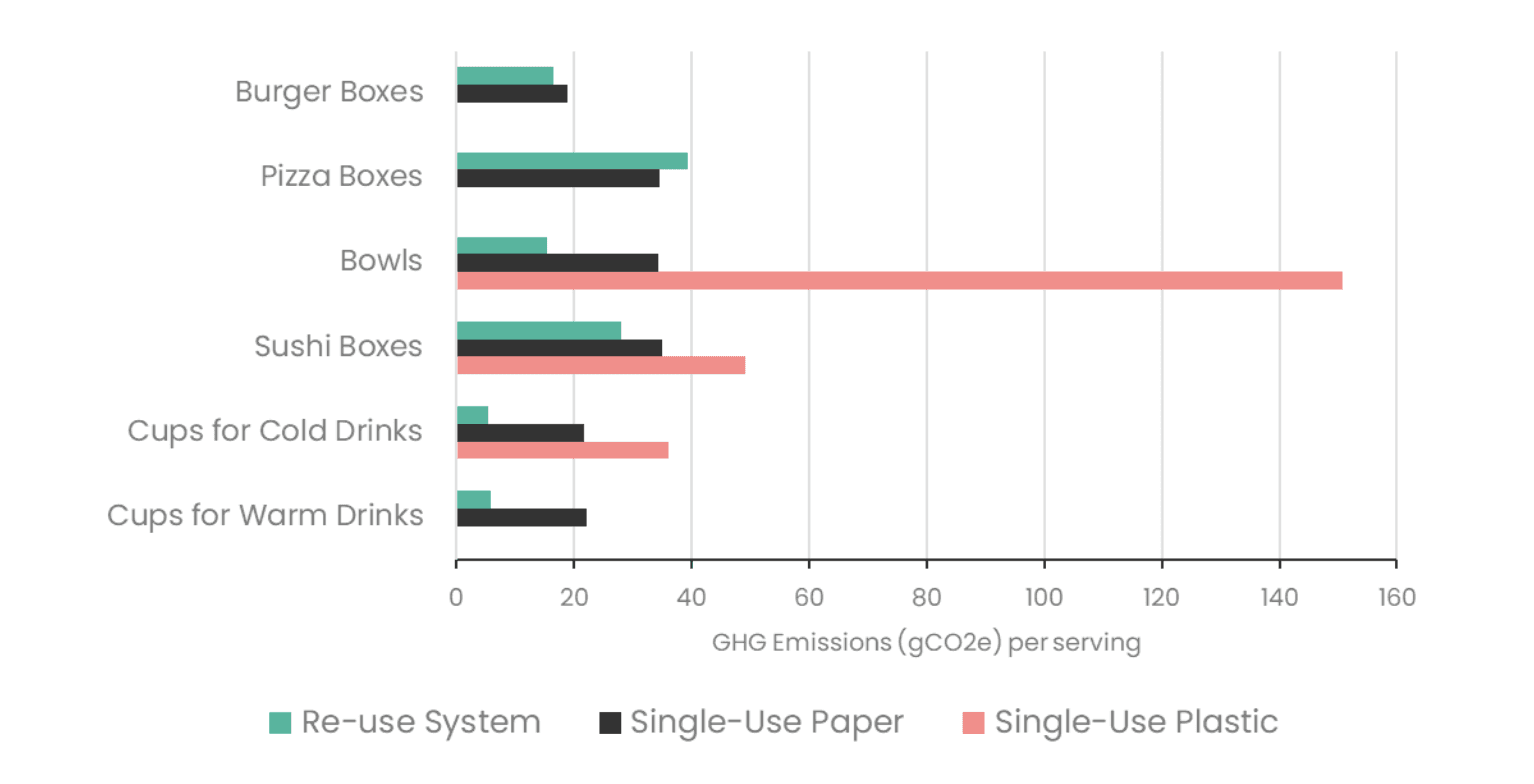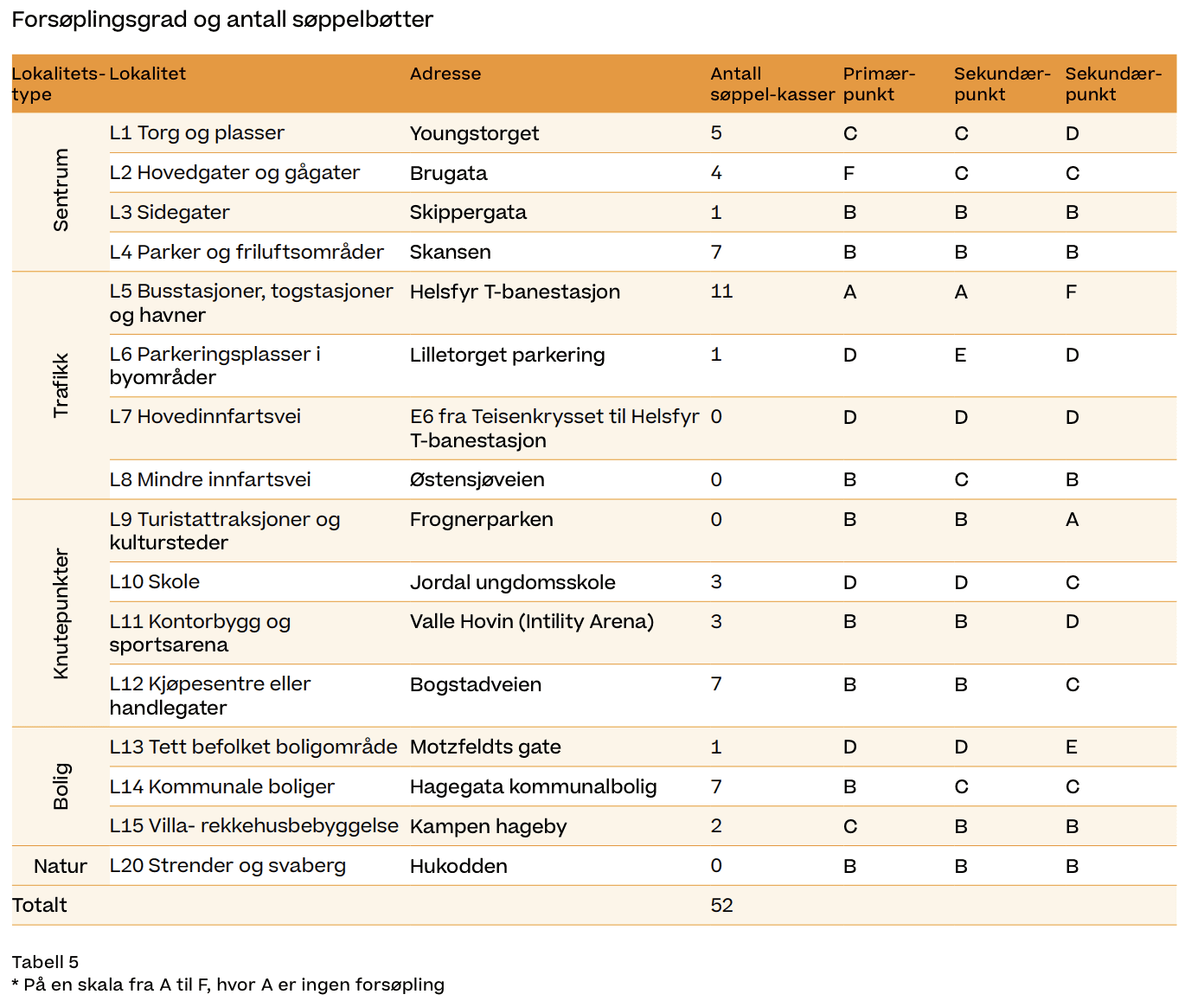tomra tafcc 200
Recognition
Description
This project has a systemic approach to recycling solutions. The delivery consists of a deposit system of reusable takeaway food containers (RTFC), for which I have designed a reverse vending machine (RVM). The TOMRA Takeaway Food Container Collector (TAFCC) is designed for collecting the RTFCs in public space, which the small footprint, sturdiness, and usability is a product of. Once it has collected a food container, the user will receive their "pant" money.
Project by Elias Rølvåg Horsgård
Sustainability has been a main focus in this project, both systemically and in the TAFCC machine. Systemically, the implementation of RTFCs saves plastic and reduces litter in urban streets. The TAFCC is designed to be reliable with no screens, printers, or apps, fit into the urban environments with possibilities of customization, and to be easily recognizable to users. It’s also easy to empty through a door on the front by collection crews.
EU regulation is predicted to ban single use plastic containers in the future, and this project is one way of securing TOMRAs position for the future.
the system:
The project suggests the implementation of a deposit/pant system for collecting the food containers as people in Norway are very good at depositing, and there is potential to transfer this tradition to a new situation. I mapped out a system for how this could work, and what role TOMRA could have. See illustration bellow.
Ideally, the lease/rent of the reusable containers would be in the same price range as the singe use containers so that the restaurants would have a reason to pick this option.
The user journey for the service is illustrated bellow:
The product:
How it works:
You would feed the RTFC in from the front, it would go on a conveyer belt and be scanned by sensors to identify the container as a container. Then the machine would swallow the container and toss it in a collection box. See illustration.
Shape:
The front has an inviting, open chape that clearly indicated that this is where you interact with it. This is due to the interfaces’ rounder over edges and that it is extruded from the main body. The rounded corner also feels friendly and inviting and could be the new direction for TOMRA. I did want the shape to be friendly so that people wouldn’t be skeptical of using it for the first time, and to encourage people to use the service. By having the machine look less like a machine makes it more approachable and identifiable.
Interaction:
When you come up to the RVM, you scan the container which has an NFC in it, and the RVM will open. When you have inserted all your containers, you tap your credit card to receive the "pant"-money, and the machine will close again.
The TAFCC has a big scanning area, both for scanning the food container and the card. Using hierarchy to indicate what steps needs to be done first. There are also LED strips pulsating light around the step you are at.
STEP 1: Scan container
The reusable food containers have an NFC chip inside it, which enables you to scan the container on the scanning interface of the RVM. This is to identify that you have a container that you wish to pant.
STEP 2: Insert container
After the machine has recognized the NFC in the food container, the machine will open, and you insert how many containers you have. You don’t need to scan every container when the machine is already open as there will be sensors inside the machine that recognize the containers and that won’t accept foreign objects. The machine will also devaluate the food containers through the NFC preventing scammers.
STEP 3: Tap credit card
When you have inserted all the containers, you tap you credit card on the highlighted surface to receive the pant. You can also use apple pay, smart watched etc. as well. When the transfer is complete, the LED-strip will turn green, and you will hear a little confirmation sound.
Location of opening:
By having the opening to the machine on the bend, it is inviting when it is open, and you don’t have to put you hand inside the machine. Instead, there is more space from above, which makes it more pleasant to use. The opening will open automatically, and now you have a machine you can interact with without having to touch it.
The back of the TAFCC:
The backside can be customized to fit into different spaces while keeping its characteristics. It can be used to fit in, to stand out, to advertise or to do promotion or campaigns on.
Emptying the machine:
There are also secondary users of the machine, the ones that will empty it frequently. To make the access easy and to not limit the placement of the machine, the machine has a door on the front. The trash can will swing open with the door, and the box with takeaway food containers can be slid out on rails. You will then need to take the bag with the containers out of the box and put in a new one, similarly to how you change a devalued deposit bottle bag. This is also something that would need to be developed further.
Insights / background
Reusable food containers:
EU regulation is moving towards banning all single use plastics in the future, and it is important for TOMRA to be proactive. According to a report Eunomia did for TOMRA, there is good potential to reduce GHG emissions by switching to a reuse-system (Eunomia, 2023, s.14). And, recycling single use containers is not as efficient when the containers are dirty according to Grønt Punkt Norge (Grønt Punkt Norge, 2013). Having this in mind, reusable takeaway food containers is a valid solution in the future.
reusable food containers:
I quickly made some rough sketches of the 5 different containers I imagine would exist. These are based on the many existing single use containers used today. These would need to be designed further, thinking about opening mechanisms, cleaning, stackability, identity etc., but that’s out of scope for this project. It would be reasonable to think that they would have a rough size around 25cm x 15cm x 10cm and be made from a plastic material.
Final model:
Handmade 1:1 model of the TAFCC 200 in Styrofoam.
Bonus material:
Interface and opening mechanism testing:
Sources:
TOMRA. (2023, 12. juni). TOMRA and Aarhus City enter collaboration to create innovative reuse system. TOMRA. https://www.tomra.com/news-and-media/news/2023/tomra-and-aarhus-city-enter-collaboration-to-create-innovative-reuse-system
Geitung, I. & Lystad, H. (2023). Kartlegging av forsøpling i Oslo kommune (rapportnr: 2-2023). Norwaste. https://norwaste.no/wp-content/uploads/2023/04/2_2023-Prosjektrapport-Kartlegging-av-forsopling-i-Oslo-kommune.pdf
Montalk, J. (2021, 17. juni). Takeaway containers among top ocean litter items. Healthy food. https://www.healthyfood.com/news/takeaway-containers-among-top-ocean-litter-items/#:~:text=Plastic%20items%20from%20take%2Dout,44%20percent%20of%20marine%20litter.
Eunomia. (2023). Assessing Climate Impact: Reusable Systems vs. Single-use Takeaway Packaging. (na). Zero Waste Europe, TOMRA & Reloop. https://zerowasteeurope.eu/wp-content/uploads/2023/09/Assessing-the-Climate-Impact-Reusable-systems-vs.-Single-Use-Takeaway-Packaging-v-2.2.pdf
Grønt Punkt Norge. (2013, 15.oktober). Ketsjuprester ødelegger for gjenvinningen. Grønt punkt Norge. https://www.grontpunkt.no/aktuelt/nyheter/ketsjuprester-oedelegger-for-gjenvinningen
Hold Norge Rent (2020, mars). Konklusjonsrapport Kartlegging av forsøpling Oslo commune 2019. https://holdnorgerent.no/wp-content/uploads/2020/06/Kartlegging-Oslo-kommune-2019_Konklusjonsrapport.pdf























